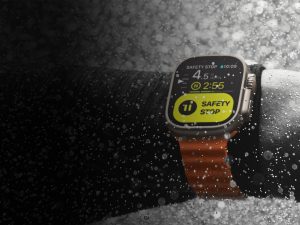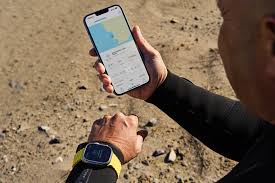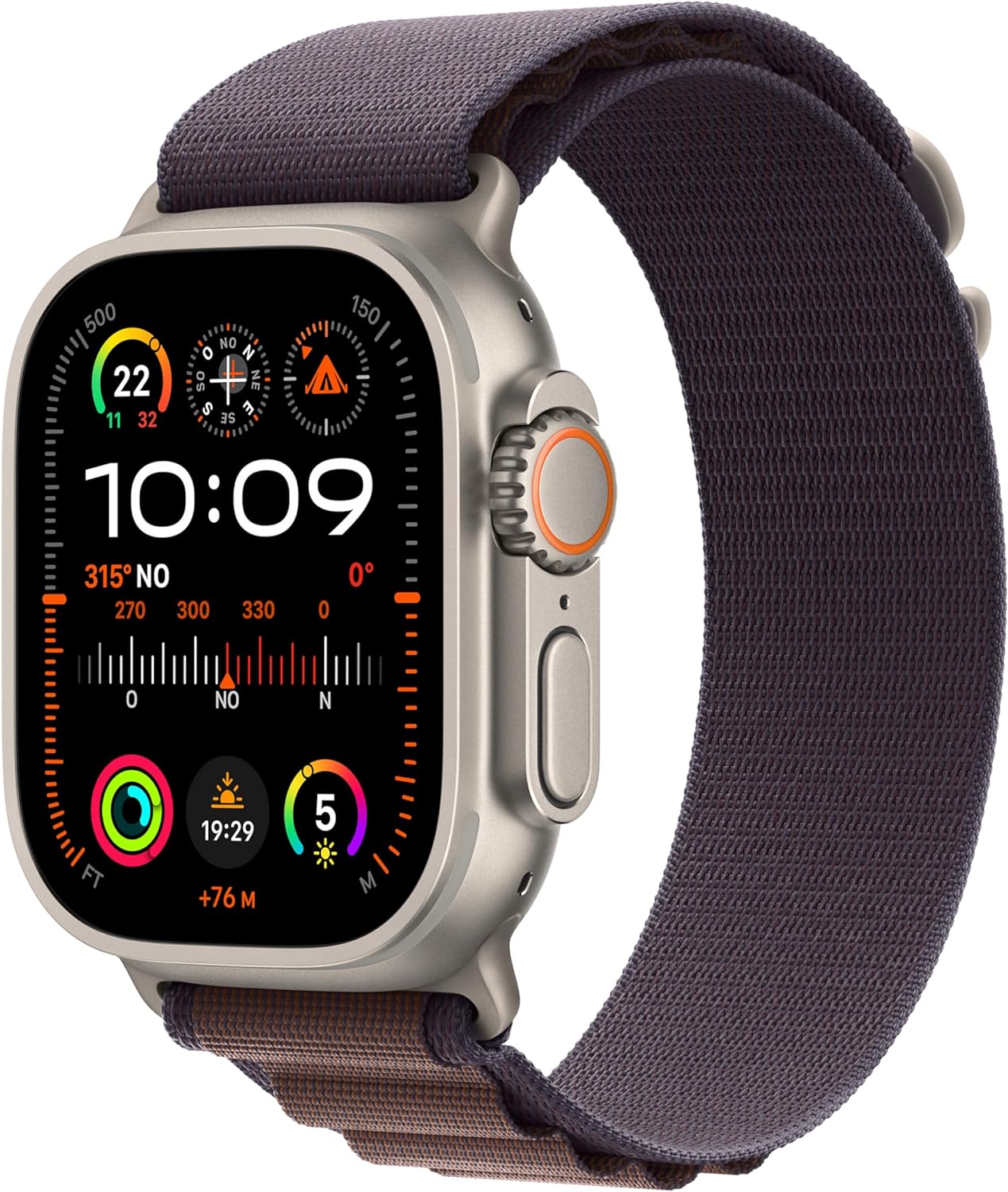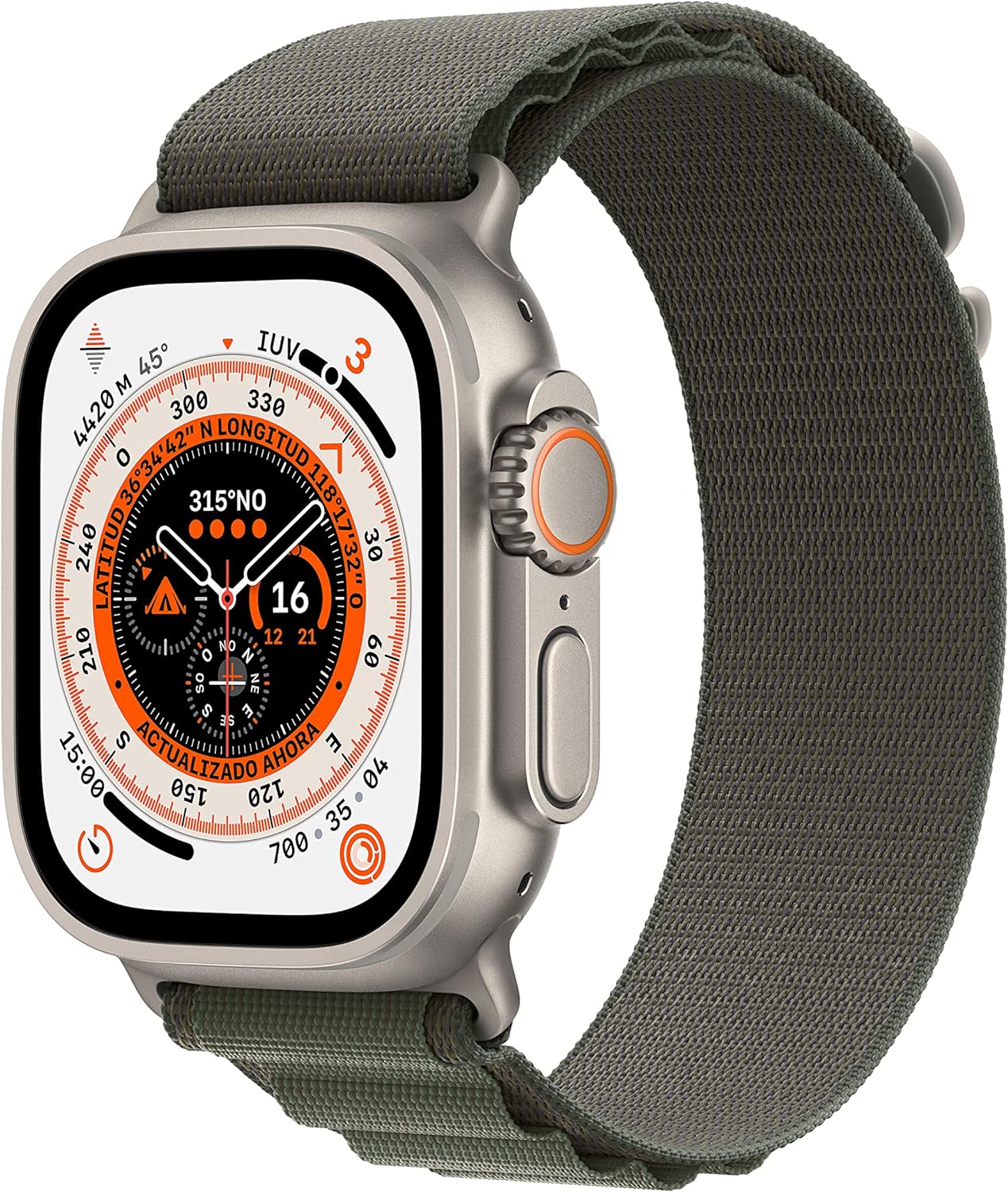You know that feeling when your gear doesn’t quite hold up anymore? When you’re hiking, or mid-run, or underwater, and you just want something more—not louder, not flashier, but sharper, faster, clearer. That’s exactly the itch that the Apple Watch Ultra 2 tries to scratch. And if you’ve been using the Ultra 1, you might be wondering: is this new version truly an upgrade, or is it Apple’s way of tweaking a few specs and calling it a day?
We’ve spent enough time with both on our wrists to feel the difference—and sometimes, the frustrating lack of one. At first glance, these watches could be twins. Same 49 mm titanium build, same rugged design, same tough sapphire screen. But once we start digging, the story gets more layered.
So let’s walk through the areas that count. What’s new, what’s the same, and why, for some of you, only one of them will feel like a watch from the future.
Built to take a beating, but not to surprise

Let’s just say it: there is zero difference in design between the Ultra 1 and Ultra 2. If you were hoping for slimmer bezels, a different button layout, or even a new strap design, keep hoping. Everything stays put: that oversized crown, the Action Button, the flat display surrounded by raised edges for protection. Both weigh virtually the same—61.4 grams for the Ultra 2 and 61.3 grams for the Ultra 1—so don’t expect a lighter feel either.
Now, is that a bad thing? Not necessarily. The Ultra’s design was already a bold departure when it launched. The titanium casing still screams durability and doesn’t scratch easily, and the fit is surprisingly balanced despite its size. But let’s be honest: you won’t get any “wow” factor from just looking at the Ultra 2 if you’ve already seen the first one.
A display that finally keeps up with sunlight
Here’s where things shift gears. The Ultra 2’s screen reaches a peak brightness of 3000 nits, a 50% boost over the 2000 nits on the Ultra 1. And let’s be clear: this isn’t one of those specs you never notice. The difference is real. Out in the sun, whether you’re climbing, running, or biking, the Ultra 2 remains shockingly legible without you needing to squint or shade it.
Another underrated improvement? Minimum brightness now dips to just 1 nit on the Ultra 2, which makes it a lot easier on your eyes when checking the time in the middle of the night or during a movie. That kind of range—from barely-there glow to daylight-blasting brightness—makes the screen feel much more adaptable.
Aside from that, the panel itself hasn’t changed. Both watches use the same 1.99-inch Retina LTPO OLED display, and resolution is identical. So if you’re indoors most of the time, the upgrade might not wow you. But outdoors? The Ultra 2 takes the crown. No contest.
Battery that breathes a little easier

Battery life isn’t something you notice when it’s working well—but the moment it dips, it’s all you can think about. Both watches promise up to 36 hours in standard use, which is already above average for smartwatches with full-featured displays. Turn on low-power mode and the Ultra 2 pushes to 72 hours, while the Ultra 1 tops out around 60.
Those 12 hours can mean the difference between recharging on a Sunday night or making it to Monday morning. If you’re planning a weekend hike, a long trip without easy access to power, or just hate charging things all the time, this little buffer in the Ultra 2 starts to feel more meaningful than it sounds on paper.
No changes to the charging system, though. Same magnetic puck, same charging speed, same slightly awkward placement if your nightstand setup is tight.
Performance where it matters, gestures that surprise
This is where we feel like the Ultra 2 starts justifying its name. The S9 chip isn’t just faster—it changes how the whole experience feels. Apple packed a 4-core Neural Engine into the S9 SiP, and it makes interactions feel smoother, more direct. Apps open quicker, animations flow better, and there’s none of the lag that sometimes crept into the Ultra 1 during busy activity tracking sessions.
Then there’s the double-tap gesture. With the Ultra 2, you can control the watch by tapping your thumb and index finger together—useful for pausing timers, answering calls, or scrolling through widgets when your other hand is busy. It’s not perfect yet, but once you get used to it, it becomes one of those small touches that feels like magic when it works.
Siri also gets a serious glow-up. On the Ultra 2, voice commands are processed directly on the device, which means responses are faster and still work when your iPhone is out of range. On the Ultra 1, Siri still needs your phone nearby, which in 2025, feels oddly outdated.
Health sensors: same hardware, same data
Here’s where you might start zoning out—and we don’t blame you. Both models have the exact same health tracking hardware: ECG, SpO2, body temperature, heart rate, VO2 max, dual-frequency GPS, gyroscope, compass, altimeter… the list hasn’t changed.
No upgrades in sleep tracking, no new health sensors, no extra fitness metrics. Everything works well, and if you’ve used the Ultra 1, you’ll get identical results with the Ultra 2.
Now, to be fair, the sensor suite is still among the most complete you can wear on your wrist, and it’s accurate enough for serious training and outdoor navigation. But if you were hoping for something new—maybe hydration tracking, or better stress analysis—you won’t find it here.
Built for chaos, but just a bit safer

The Ultra series isn’t afraid of a little danger. Both watches are still rated for the same rugged standards: MIL-STD 810 durability, IP6X dust resistance, and WR100 for water resistance up to 100 meters. Take them diving, drop them on rock, or run through a thunderstorm—they don’t flinch.
So what’s different? Not much, but enough. The Ultra 2 has improved international emergency calling, so it’s a bit more reliable if you’re traveling off-grid. And its accident detection algorithms have been tweaked for better accuracy, though don’t expect miracles.
That said, fall detection, crash alerts, built-in sirens, and emergency SOS are available on both. Functionally, they’re near equals when it comes to keeping you safe. So the improvements here are more about refining than reinventing.
Why the Ultra 2 only matters if you’re new
Okay, cards on the table: if you already own the Apple Watch Ultra 1, you can skip the Ultra 2 without guilt. The few upgrades—brighter screen, slightly better battery life, new gesture controls—don’t feel like a leap. More like Apple doing what it always does: iterate gently.
But if you’re coming from an older Apple Watch or stepping into the Ultra line for the first time? Different story. The Ultra 2 is smoother, brighter, and more responsive in the ways that make a smartwatch feel seamless rather than smart-ish. The gesture controls may seem gimmicky, but we’ve come to rely on them more than we expected. The brighter screen? That’s a luxury that becomes a necessity in harsh light.
What genuinely surprised us was how much faster everything feels with the S9 chip. It’s not just about specs—it’s about how fast you can launch a workout, how quickly Siri answers when your hands are full, and how natural it feels to interact with your wrist instead of fumbling for your phone.
But the design stasis is hard to ignore. The Ultra 2 looks exactly like the Ultra 1, and depending on your expectations, that either feels comfortingly familiar or frustratingly lazy. Same goes for the health sensors. No new tracking features, no hardware evolution, no wow moments there.
In the end, if you’re looking to buy your first rugged Apple Watch, the Ultra 2 is hands-down the better choice. Not because it reinvents the formula, but because it polishes it in just enough places to feel relevant. And in a market of wearables where most “new” models feel like reruns, that matters.
But if you already own the Ultra 1? Sit tight. Nothing to see here. Unless you’re obsessed with screen brightness. Or can’t stop tapping your fingers. Or hate waiting for Siri. Or… wait—maybe not.


